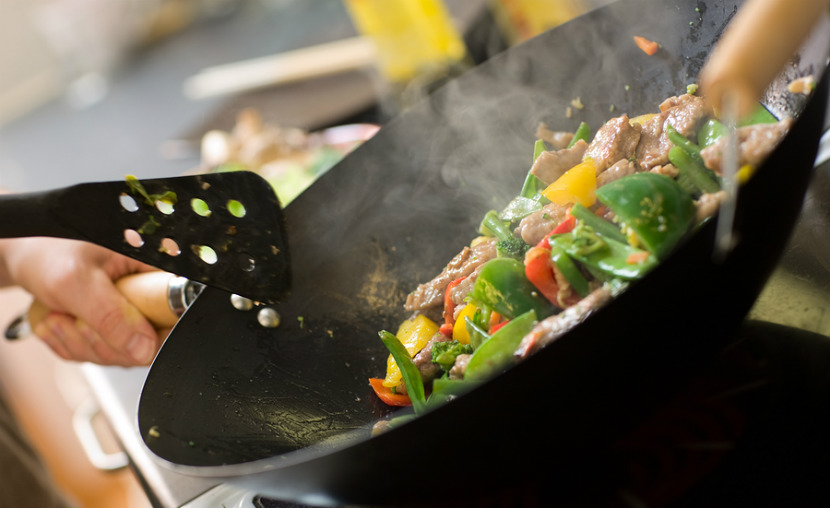How to Reheat Rice in a Wok: A Barbecue Enthusiast's Guide
Written By James MorganAs barbecue enthusiasts, we often find ourselves with some leftover rice from our grilling gatherings. And while the microwave method could work, nothing compares to reheating rice in a wok. The wok's high heat and even distribution provide a perfect texture, making your leftovers taste just as good as freshly cooked rice. In this guide, you will discover how to reheat rice in a wok to maintain its flavor and texture.

Why Use a Wok to Reheat Rice?
Woks are versatile and excellent for reheating foods, especially rice. They can reach high temperatures quickly, which is ideal for getting that perfect reheat. Moreover, the shape and construction of the wok ensure even heating, which prevents the rice from becoming mushy or unevenly warmed.

Choosing the Right Wok
Before diving into the process, let's talk about the wok itself. A good wok is essential. If you're using a standard steel or cast-iron wok, make sure it is well-seasoned. If not, heres a comprehensive guide on how to clean a wok with a bamboo brush.
Materials Needed
- Leftover rice
- Cooking oil (peanut or vegetable oil)
- A well-seasoned wok
- Spoon or spatula for stirring
- Optional: soy sauce, vegetables, or protein for added flavor

Step-by-Step Guide: How to Reheat Rice in a Wok
Step 1: Prepare Your Ingredients
First, gather all the ingredients you need. Make sure that the leftover rice has been separated properly without any large clumps.
Step 2: Heat the Wok
Place the wok over medium-high heat. Wait until the wok starts to give off a slight shimmer, which indicates it is hot enough.
Step 3: Add Cooking Oil
Add a tablespoon of cooking oil and swirl it around to coat the surface evenly. How to make wok sauce that could amp up the flavor of your reheated rice.
Step 4: Reheat the Rice
Add the rice to the wok. Use a spoon or spatula to break up the clumps and stir continuously. Stir-frying will ensure all the rice is heated evenly. If the rice is too dry, sprinkle a little bit of water.
Step 5: Optional Add-ins
This is the time to add any extra ingredients like soy sauce, vegetables, or protein. Ensure these are cooked or reheated as necessary before adding to the rice.
Step 6: Serve
Once the rice is evenly heated, serve it immediately. The reheated rice should have a nice texture without being mushy or overly dry.

Tips and Tricks
- If you find the rice drying out too quickly, a splash of water or broth can help.
- Keep stirring the rice to avoid burning.
- Use leftover grilled vegetables or meats to enhance flavor and minimize waste.
Common Mistakes to Avoid
Reheating rice in a wok might seem straightforward, but there are a few common pitfalls:
- Too Much Oil: Adding too much oil can result in greasy rice.
- Overcrowding the Wok: This can make it difficult for the rice to heat evenly.
- Using High Heat All the Time: While high heat is beneficial, you must adjust to medium once the rice begins to warm to avoid burning.
Faq Section
Can I reheat rice in a wok without oil?
Yes, you can reheat rice without oil, but adding a bit of oil prevents the rice from sticking and enhances the overall flavor.
Is it safe to reheat rice?
Yes, it's safe to reheat rice as long as it has been stored correctly. Ensure the rice is reheated to a piping hot temperature to reduce any risk of foodborne illness.
Can I add other ingredients while reheating rice?
Absolutely! Feel free to add veggies, soy sauce, or other leftovers to make the dish more flavorful.
For more detailed insights on wok cooking techniques, check out this guide to cooking with a wok.
For other barbecue-related tips and tricks, make sure to visit our latest blog entries.
As an Amazon Associate, I earn from qualifying purchases.



